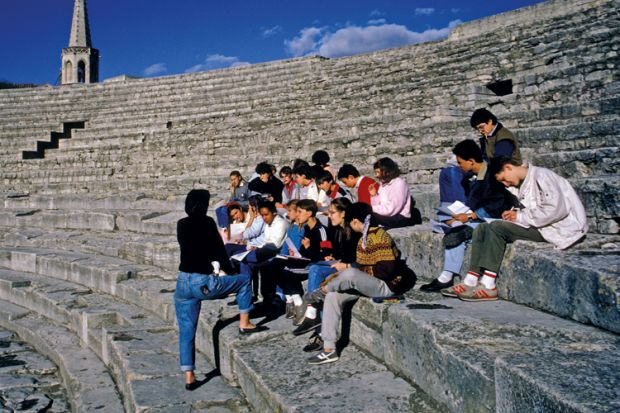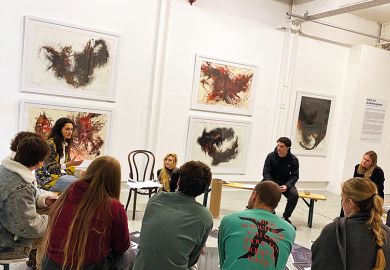Many universities are still attempting to teach students 21st-century ideas while stuck in an “18th-century paradigm”, an education expert at an architectural and consulting firm has warned.
Jo Dane, principal and education consultant at Woods Bagot’s Australia office, said that there is a “real disconnect between how educational literature says students should learn and the spaces in which that learning is meant to happen”.
She added that “elite universities” are in the “most danger” of becoming outdated as they “probably think their reputation is going to carry them well into the future”.
Speaking to Times Higher Education during the World Academic Summit at the University of Melbourne earlier this month, she suggested that universities could split their buildings by research theme, which would be interdisciplinary, rather than by faculty, and create flexible spaces with features such as “active walls”, “writeable surfaces” and “mobile furniture”, although she admitted that would require more space than a lecture theatre.
She also suggested that “information dissemination” could “just as effectively happen online” as in a lecture theatre, thereby enabling teaching time to focus on “active” learning, where students can “discuss or do or practise a range of other activities that reinforce the learning”.
“I’d like to see the predominance of lectures reduced,” she said. “All of the educational literature that talks about how students learn reveals that sitting in a lecture is not an effective process.
“Even a tutorial is a very didactic experience. It might be a small class and it might be discussion-based, but the vast majority of those experiences are still going to be centred around the teacher. The voices of maybe a quarter of the class are heard. It’s not the most effective experience students could be having.”
Ms Dane, formerly a course coordinator at Monash University, said that although lecture theatres had been used as far back as the 5th century, technology had developed enough now to allow for change. She argued that universities must update their infrastructure if they are to attract students, produce graduates who are employable and improve conditions for lecturers too.
“There’s a very good reason why lectures have lasted for so long – because there were very few other resources available to scholars. In our day and age, technology gives us the opportunity to change all of this,” she said.
“The elite universities are in the most danger as they probably think their reputation is going to carry them well into the future. But if they’re not changing their teaching and learning, students will find places where they can have the experience they value, which will be related to the kind of skills they’re developing so they become more employable.
“If you spend four years sitting in a lecture theatre or tutorial room and you come out with a degree, I’m not sure what skills have been developed in that environment that [are] going to suit the employers that those graduates are then going on to.”
后记
Print headline: Lecture theatres are just so 5th century




